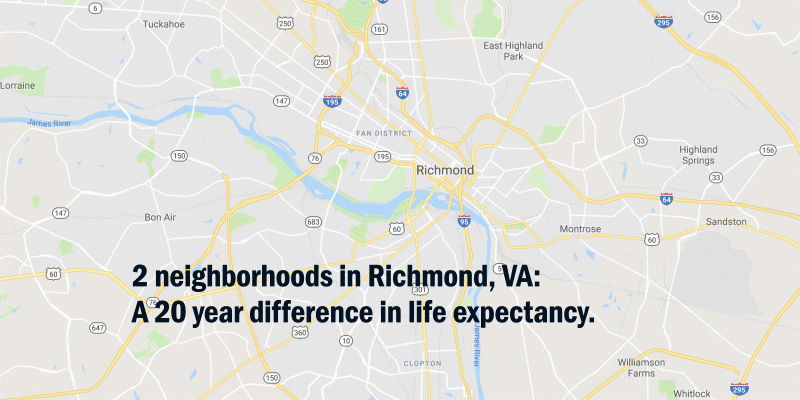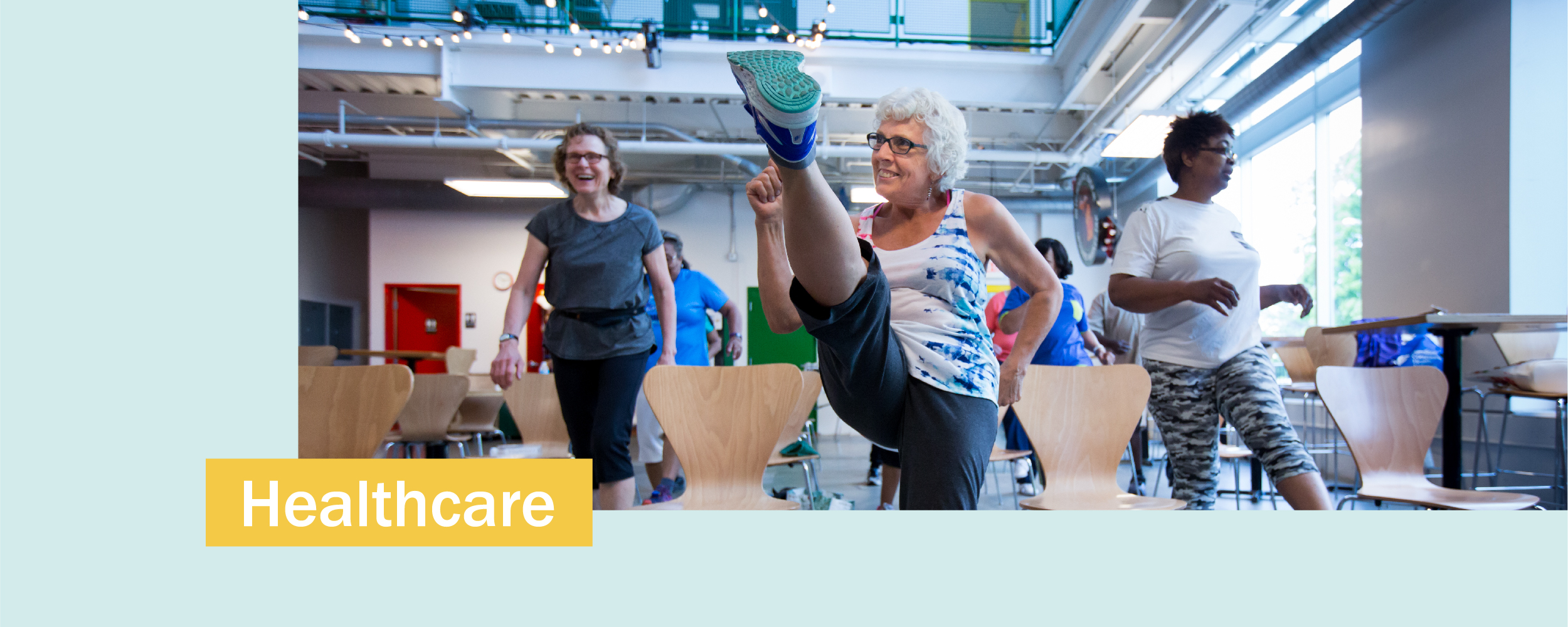Taking aim at the life expectancy gap
Good health, long life. It’s what we all want, for ourselves and the people we love. Unfortunately, whether you’re comparing chronic disease burdens or average life expectancy, stark place-based disparities emerge. In Richmond, VA, for example, a child growing up in middle-class Westover Hills can expect to live to 83, while a child living just five miles to the east, in Gilpin, has a life expectancy of just 63 years.
Wellness, it turns out, overwhelmingly depends on social and economic factors rooted in place—in things like quality schooling and living-wage incomes, healthy homes and safe streets, access to fresh food and opportunities for social enjoyment, stress relief, and exercise.

Taking these facts as a call to action, LISC has announced that it will aggressively pursue health impacts in all the neighborhoods where we work. To get the job done, LISC is linking arms with a new kind of partner—the healthcare enterprises that so often anchor distressed neighborhoods, bring critical expertise, and share a commitment to residents’ health.
It’s happening in northwest Ohio, where in 2018 Toledo LISC launched an ambitious, first-of-its-kind partnership with ProMedica, an integrated health system that’s been an extraordinary pioneer in community health.
LISC and ProMedica are devoting $45 million over the next ten years to address the social determinants of health in under-resourced neighborhoods around Toledo and the region, beginning with a community not far from ProMedica’s downtown headquarters, UpTown, where more than half of residents live in poverty and 30 percent are unemployed.
The project’s most groundbreaking feature is a $25 million loan pool (with LISC contributing $15 million and ProMedica providing $10 million) that will bring capital into the region for development projects that otherwise wouldn’t happen. The initiative also includes $20 million in grants, with LISC and ProMedica each kicking in $10 million, to be deployed for community programs and services.
This partnership brings together the will and the means to rigorously track community outcomes, define metrics of success, and create a model. “The hope,” explains LISC President and CEO Maurice A. Jones, “is that we grow what ProMedica is doing, and that hospitals across the country look to emulate what they’re doing.”
Elsewhere around the country, novel LISC partnerships are promoting wellness by attacking specific conditions that take a heavy toll on people who live in underinvested communities.
In Indianapolis, the target is diabetes. Indianapolis LISC, working with the mayor’s office and others, helped broker a $7 million investment last year by hometown pharmaceutical giant Eli Lilly and Company to address high incidence of the disease in three Indy neighborhoods. This is Lilly’s first such investment in the United States, building on similar efforts in communities in Mexico, India, and South Africa.
In the five-year pilot, led by Indiana University’s Richard M. Fairbanks School of Health in collaboration with LISC, Eskenazi Health, and Marion County Health Department, community health workers will fan out in the neighborhoods to encourage diabetes screening and improve continuity of care for residents diagnosed with diabetes. They will also collaborate with neighborhood groups to develop projects that foster a local culture of health and better access to affordable, fresh food.
In West Philadelphia, they’re taking on asthma, a condition affecting roughly one in four area children. A home repair collaborative spearheaded by Philadelphia LISC won a coveted BUILD Health Challenge grant in 2017 that’s now enabling the initiative’s partners—led by Rebuilding Together Philadelphia, Children’s Hospital of Philadelphia, and the city’s public health department—to visit the homes of child asthma patients to identify triggers and call in repairs designed to reduce those hazards.
Hartford LISC, meanwhile, is leading a three-year initiative with Connecticut Children’s Medical Center to make healthier homes for families in the hospital’s neighborhood of Frog Hollow, which has one of the highest poverty rates in the state. The program links the hospital’s lead and mold remediation programs with the weatherization programs of the state’s two largest utilities—providing seamless cross-referrals that will result in dwellings that are energy-efficient, warm, dry, and contaminant-free.
Good health, long life. It’s what we all want, for ourselves and the people we love.
Still other LISC partnerships leverage the economic heft of local healthcare anchors to boost neighborhood businesses and job opportunities.
Virginia LISC, for example, has joined with the Bon Secours Richmond Health System to revitalize a commercial corridor in Richmond’s Church Hill neighborhood by supporting business expansions and startups. In 2018 the grants went to a popular barbecue restaurant, a yoga studio, and an auto repair shop, among others.
And Toledo LISC, in addition to its work with ProMedica, has pulled together a coalition that joins healthcare anchors with local job trainers and educators. Together they are designing training programs that can connect neighborhood residents with high-demand, local healthcare jobs.
Among the coalition’s yields in 2018: growth of an industry advisory board for Toledo Public Schools’ tech program, designed to allow students to graduate high school certified as nurse’s aides or phlebotomists.
It may take a long time to ensure that residents of every neighborhood have the chance to lead long, healthy lives. But equity demands that we start right now. Watch this space.
